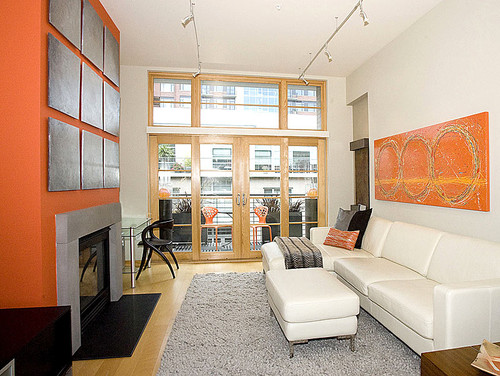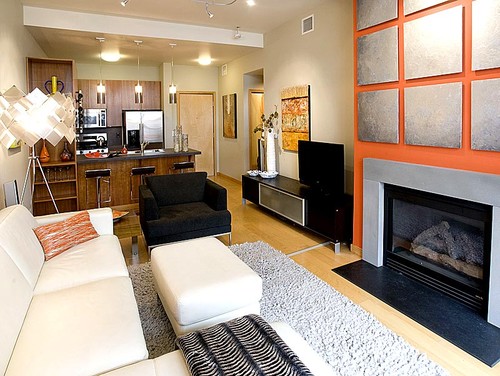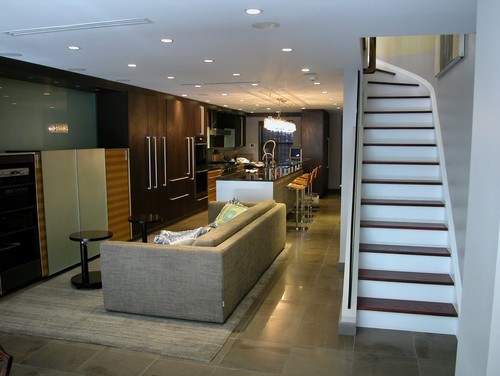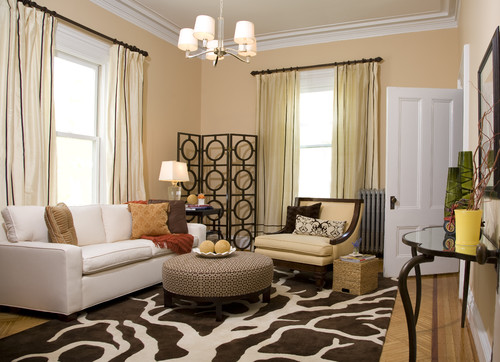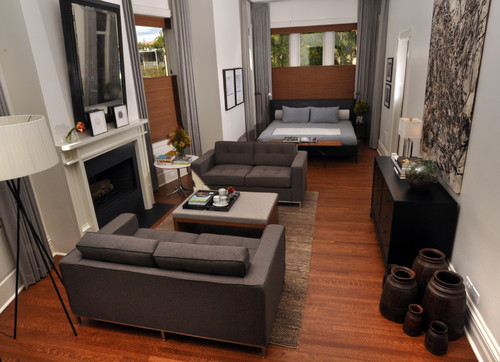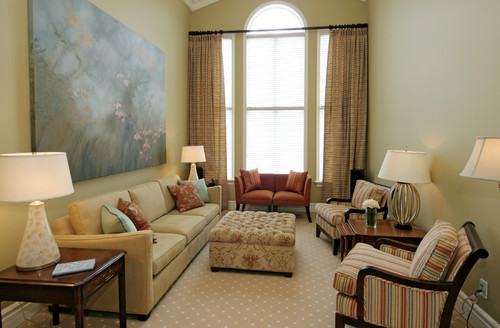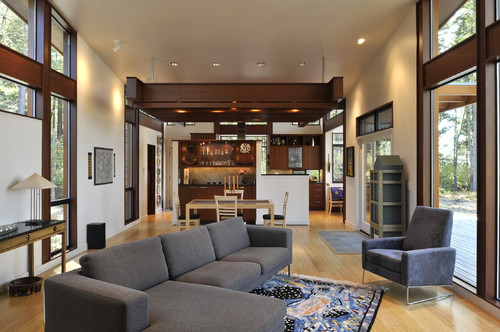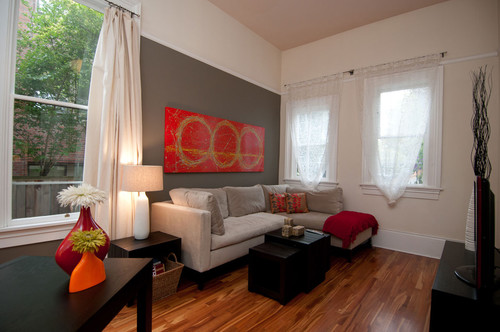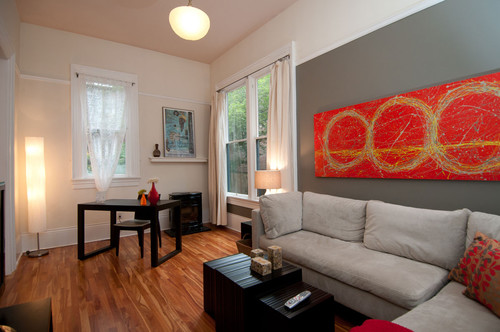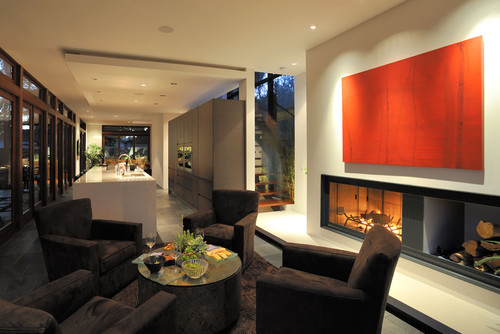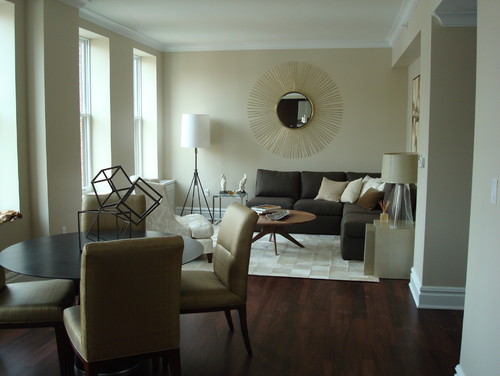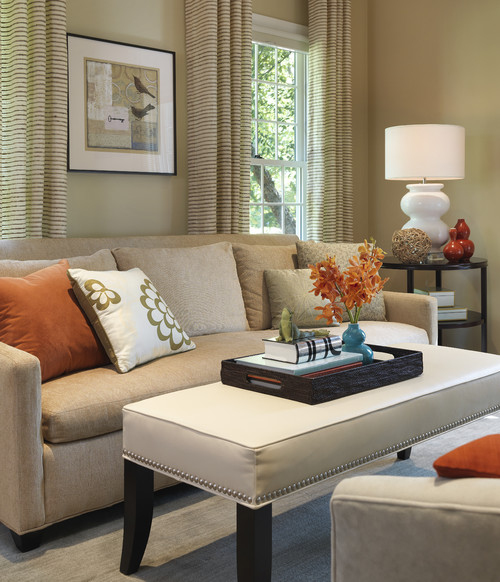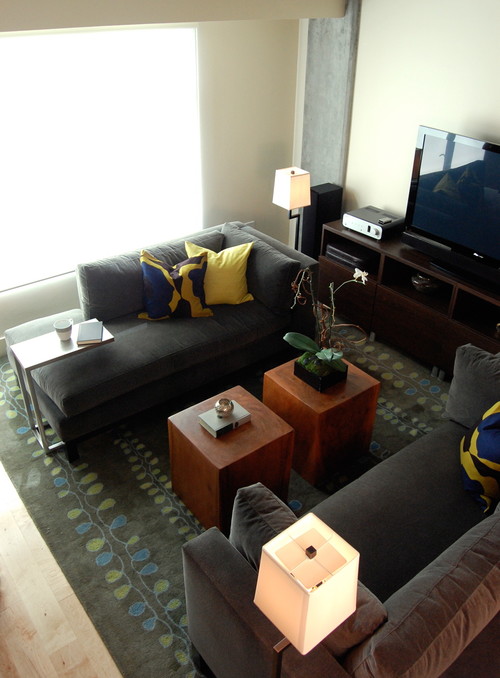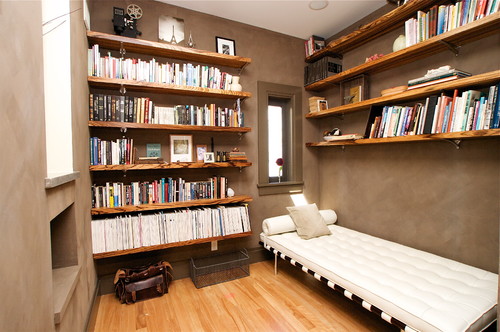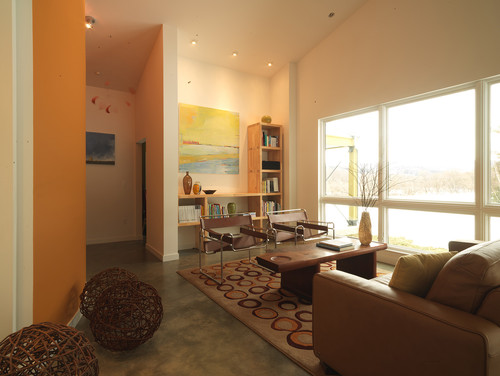How to Arrange Furniture in Long, Narrow Spaces
This condo's main living areas are one long rectangle with tall ceilings that made it feel even more narrow. You can see that there is a French door to the patio on one end ....

Tip: Make sure any area rugs are placed so that you either walk over them or can stay completely off. In the room above, the open space on the area rug is wide enough to let people walk right across it. The hearth is flush into the floor, so you can also stay off the carpet and walk through without crossing the carpet.
It is really annoying to have a rug hit halfway into a pass-through area so that you need to walk through with one foot on and one foot off the rug. If you need a custom size to achieve this, an affordable solution is to buy one you like and have it cut down and bound.
They were wise to avoid trying to put another chair in here, which would have made the pass-through too tight a squeeze. The screen in the corner is also a nice touch in a narrow space because it visually changes the shape of the room a bit, rounding out the corner.
Tip: Just say "no" to too many pieces of furniture. We are often tempted to cram in an extra chair for the maximum seating, even when we only have guests a very small percentage of the time. Instead, consider double-duty pieces like the ottoman in the above photo which can work as seating when extra people are there.



Fortunately, the doorway into the room is in the middle of one side, so we didn't have to allow for foot traffic through the room. We placed a sectional in this end with the TV.




Let me know how you dealt with your long, skinny room and put up those photos below!
